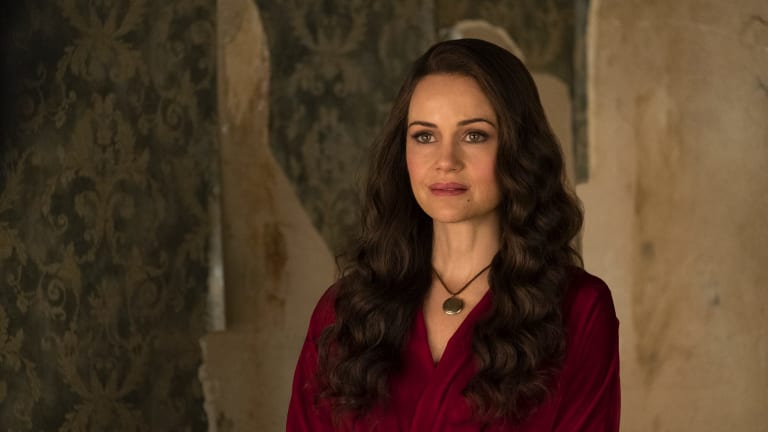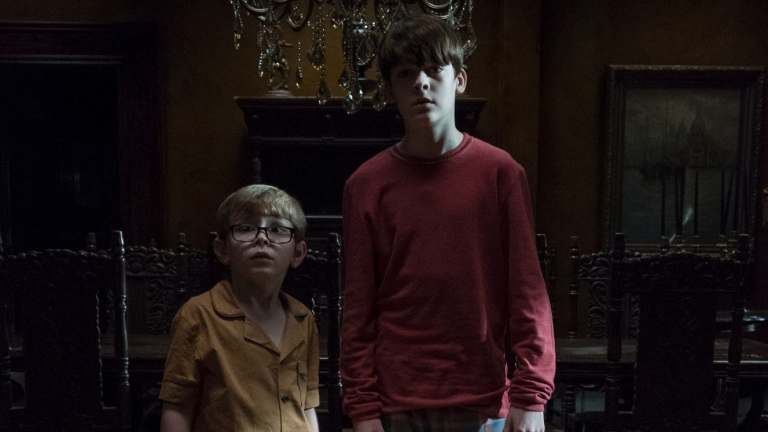At first glance, The Haunting of Hill House (Netflix, on demand) is writ large from the tropes of the haunted house genre. But as each layer of the story, adapted for television by Mike Flanagan from the 1959 novel of the same name by Shirley Jackson, is peeled back what slowly begins to form is a disturbing mosaic which is both original and thrilling.
The literary antecedent of the story serves as perhaps the biggest red herring of them all: once the story here unfurls in all of its things-that-go-bump-in-the-nighty glory, you slowly realise it is barely based on the book at all, having had a mish-mash of genre tropes and properly frightening twists bolted onto the narrative.
The capsule plot runs something like this: in the summer of 1992 a young family – Hugh and Olivia Crain, and their kids Steven, Shirley, Theo, Luke and Nell – move into a rambling old mansion named Hill House. After a series of disturbing events in the house they leave, returning some 26 years later to lay the family's ghosts – both metaphorical and literal – to rest.
From the first page Flanagan is playing with Shirley Jackson's story. In the book, Hugh Crain is the house's original owner and the story focuses on his surviving heir Luke, the resentful Eleanor, the flamboyant Theodora and an investigator named Montague. The television series, in marked contrast, borrows one of the most overused genre tropes: the weary author returning to his childhood home.
Carla Gugino as Olivia Crain in The Haunting of Hill House.Credit:Steve Dietl/Netflix
Here Steven Crain (Michiel Huisman as an adult; Paxton Singleton as a child) is a successful author, having turned the childhood haunting of his family into a bestselling book. Ironically, despite his exploitation of their experiences, he is the only member of the family (mostly) spared a brush with the manifesting horror in the house. What makes Flanagan's writing so fresh is that the expected route of the story – two time periods, presented on after the other – actually do an elegant dark ballet through the story, as the audience lurches back and forth and events begin to affect each other in an almost non-linear fashion.
Despite some curious wrinkles in apparent ages, Flanagan assembles robust and narrative's complex worlds for the two time periods in which the story is set. Timothy Hutton plays the older Hugh Crain, who returns to the house with his estranged adult children; Henry Thomas, a long way from his childhood turn as Elliot in E.T., plays the younger Hugh, whose family is tormented by a genuinely frightful non-corporeal force which is gathering in what should be their new home.
In a temporal sense this series lands perfectly, with the cinema audience taking a step back in time to re-embrace John Carpenter's masterpiece of the slasher genre Halloween, itself a nod to the manner in which a shape – "the boogeyman" – can turn from lurid shadow into full-blown terror in a single moment. Hill House reaches more broadly into its genre, with an almost Stephen Kingian sensibility, a layered cake of perfectly cooked horror story elements which seem to echo of Jay Anson's The Amityville Horror, Nick Antosca's Channel Zero and even Stephen King's It.
At 10 hours long The Haunting of Hill House should feel laboured, but it does not. Flanagan does not pack the story in, but rather gives it a lingering, melancholy pace, as though the clock begins to tick a little slower when you walk through the doors of Hill House, a place where everything is muted slightly, the colours washed out and the mood subtly flattened.
A scene from The Haunting of Hill House.Credit:Steve Dietl/Netflix
Visually it is gorgeous, thanks to Michael Fimognari's cinematography and Patricio Farrell's production design. It manages to seem crisply contemporary but somehow also frayed at the edges. Though it does not explicitly mimic his work, it also seems to gently glance back to Sy Tomashoff's work on Dark Shadows, American culture's original haunted-house-for-television masterwork.
What is perhaps most beautiful about The Haunting of Hill House is the way it both subverts the haunted house genre and then wholly genuflects to its cliches. Flanagan understands perfectly the audience's craving to roll their eyes at the bump-in-the-night trickery that goes with the territory while simultaneously wanting to be frightened by it.
Source: Read Full Article

